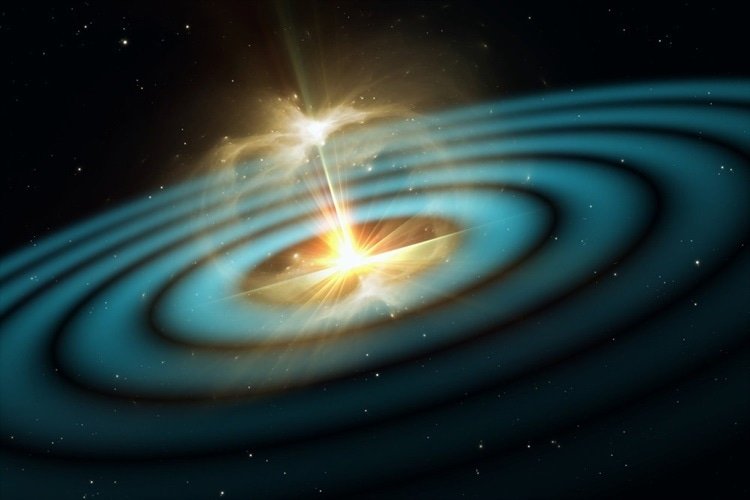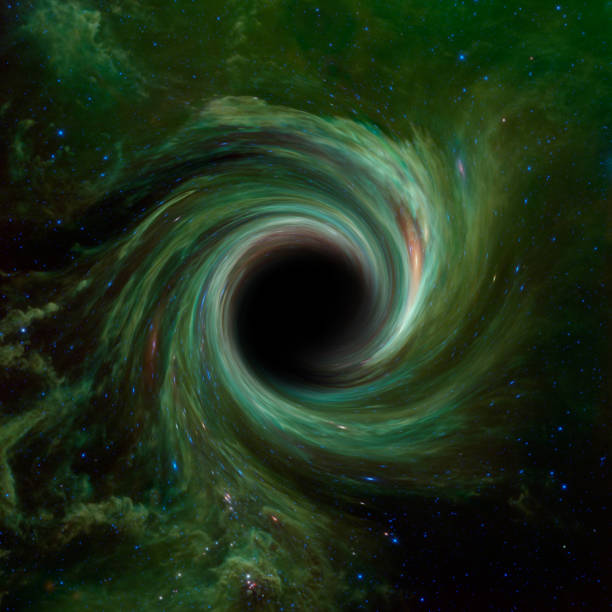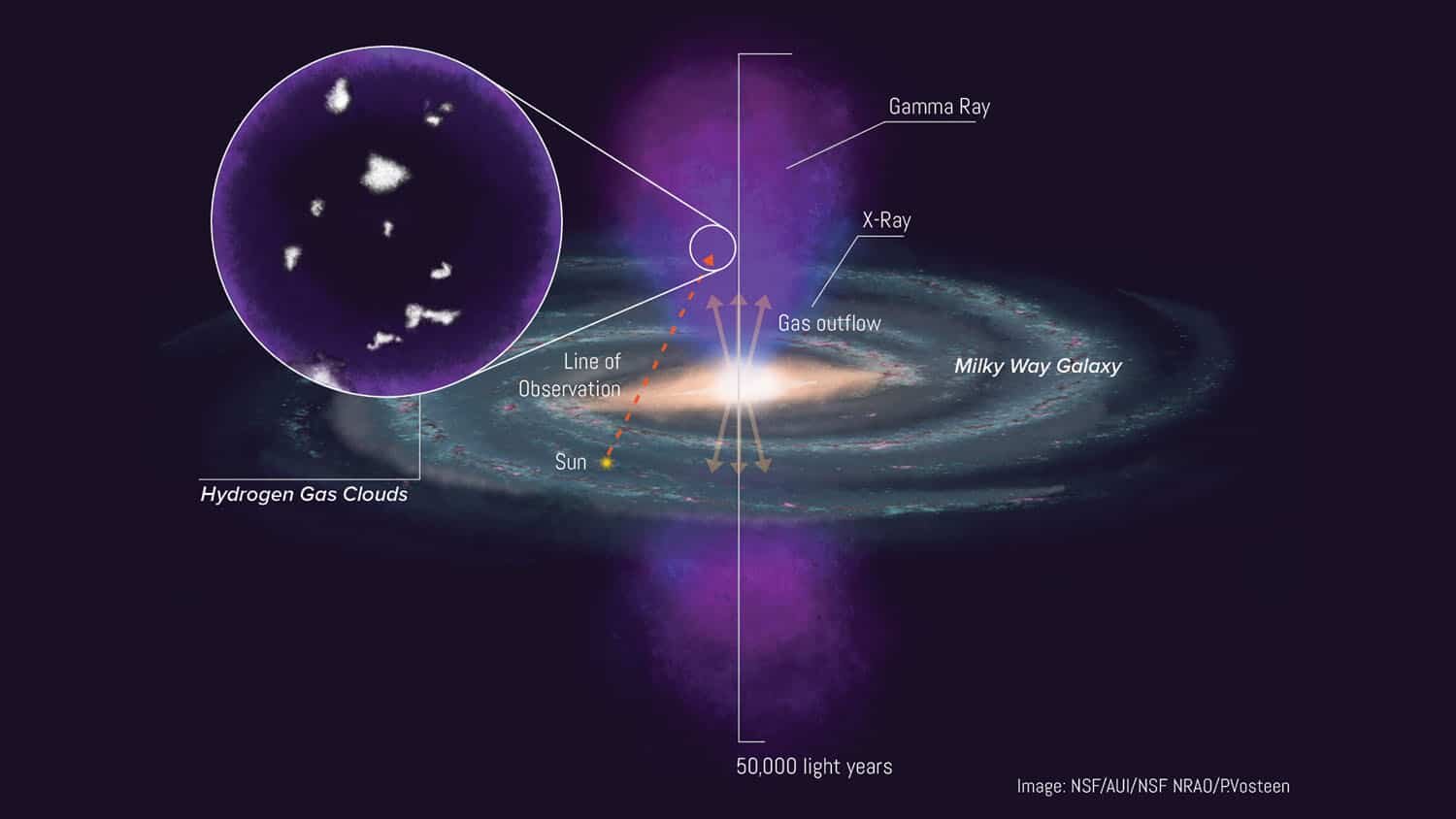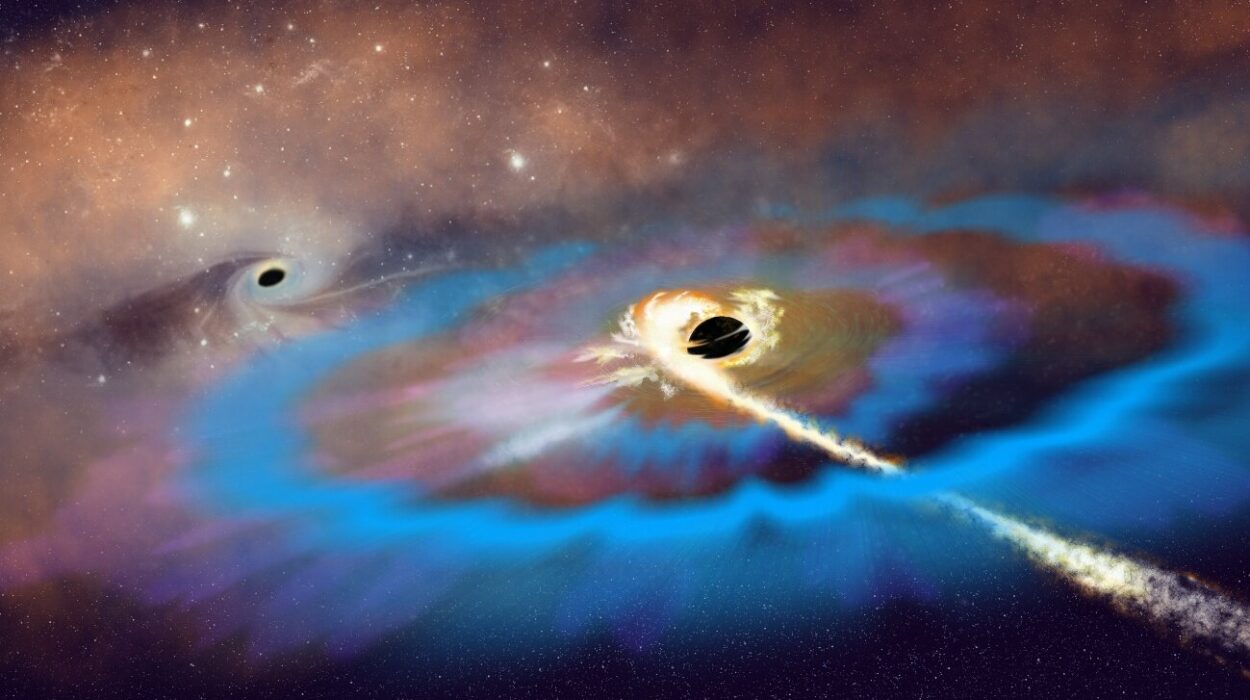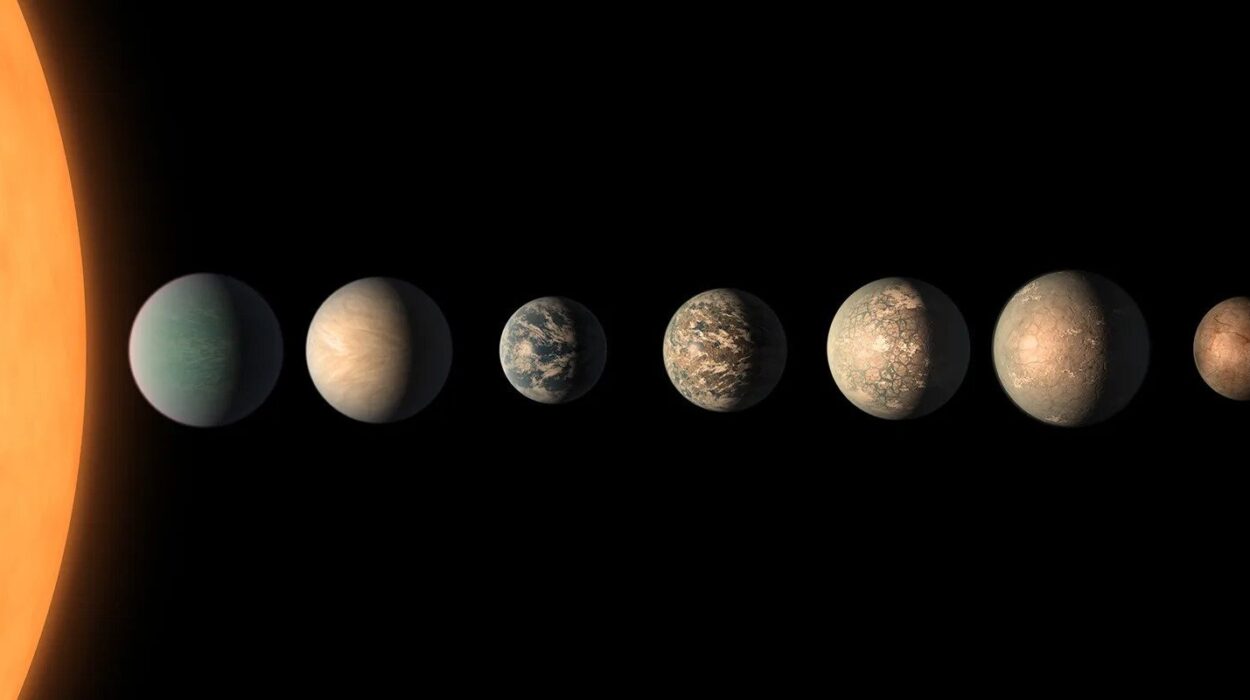In a groundbreaking study published in Nature, an international team of physicists has achieved a monumental leap in our understanding of the universe’s most violent and enigmatic events: the collisions of black holes and neutron stars. These cataclysmic interactions, which ripple across the fabric of spacetime as gravitational waves, have intrigued scientists since their first detection in 2015. Now, with a new level of mathematical precision, researchers have begun decoding these events with tools previously reserved for the most abstract realms of theoretical physics.
At the heart of this scientific milestone is the work of Professor Jan Plefka of Humboldt University of Berlin and Dr. Gustav Mogull of Queen Mary University London. Alongside colleagues from the Max Planck Institute for Gravitational Physics (Albert Einstein Institute) and several other institutions, they have calculated key properties of black hole interactions to an unprecedented degree of accuracy—thanks to a novel blend of quantum field theory, string-inspired geometry, and high-performance computing.
Cracking the Fifth Post-Minkowskian Barrier
Gravitational interactions between massive objects like black holes are notoriously difficult to model due to their sheer complexity and nonlinearity. Traditionally, physicists relied on post-Newtonian (slow-speed, weak-field) or post-Minkowskian (higher-speed, weak-field) approximations. This study pushes the envelope to the fifth post-Minkowskian (5PM) order, a towering mathematical achievement that allows for much finer predictions of how black holes behave when they pass or collide at high velocities.
Using cutting-edge methods borrowed from quantum field theory—particularly techniques inspired by Feynman diagrams and scattering amplitudes—the team modeled observables such as scattering angles, radiated energy, and the recoil velocity or “kick” of black holes after interaction. These quantities are essential to the detection and interpretation of gravitational waves.
“While the physical process of two black holes interacting and scattering via gravity we’re studying is conceptually simple, the level of mathematical and computational precision required is immense,” explains Dr. Mogull.
This achievement marks the first time these observables have been computed at the 5PM level, and it reveals layers of mathematical structure that astonished even seasoned theorists.
Calabi-Yau Geometry: From Pure Math to Cosmic Reality
One of the most extraordinary outcomes of the study is the appearance of Calabi-Yau three-fold periods in the expressions describing radiated energy and recoil momentum. These complex geometric structures, long familiar to mathematicians and string theorists, are usually confined to abstract formulations of extra dimensions and hidden symmetries in theoretical models. But now, they have surfaced in a very real and observable domain—astrophysical black hole interactions.
Benjamin Sauer, a Ph.D. candidate at Humboldt University, puts it succinctly: “The appearance of Calabi-Yau geometries deepens our understanding of the interplay between mathematics and physics. These insights will shape the future of gravitational wave astronomy by improving the templates we use to interpret observational data.”
This finding doesn’t just beautify the mathematics—it’s practical. Gravitational wave observatories like LIGO, Virgo, and KAGRA, along with upcoming detectors such as LISA, rely on accurate waveform models to identify and analyze signals buried in noise. By refining the theoretical underpinnings of these waveforms, the study helps sharpen the cosmic “ears” of our instruments.
Capturing the Cosmic Kick: Why Recoil Matters
When two massive objects such as black holes interact, they don’t just merge or drift apart. They can impart a kick—a sudden recoil motion resulting from the asymmetry in the gravitational wave emission. This kick can be so powerful that it ejects black holes from the centers of galaxies, influencing how galaxies evolve over billions of years.
Understanding and quantifying this kick is essential for galactic astronomy, cosmology, and even for tracing the history of black holes that no longer reside in their original galactic homes. By modeling these interactions with the precision afforded by the 5PM framework, researchers can now make more accurate predictions about when, where, and how black holes get kicked across the cosmos.
From Theory to Observation: The Era of Precision Gravitational Astronomy
Gravitational waves—ripples in spacetime generated by massive, accelerating objects—have transformed astrophysics. They allow us to “listen” to the universe in a way that complements traditional light-based observations. But turning the faint signals of these waves into meaningful scientific insights requires accurate templates for how waves should look when produced by different cosmic events.
This is especially crucial in domains where orbits are not gentle spirals but high-speed, elliptic bound systems—trajectories that more closely resemble scattering than merging. Traditional waveform models assume slow, quasicircular orbits, which fail under these extreme conditions. The new 5PM results break this limitation, providing insights into a regime where assumptions about slow velocities no longer hold.
The Unexpected Marriage of Gravity and Quantum Techniques
One of the most exciting aspects of this research is how it bridges classical and quantum physics. Despite dealing with massive astrophysical objects and not subatomic particles, the methods used—such as scattering amplitudes and loop integrals—are straight out of the quantum playbook.
Even more intriguingly, these calculations reveal that the same mathematical tools used to understand string theory and quantum gravity also describe black hole physics. “This could fundamentally change how physicists approach these functions,” says Dr. Uhre Jakobsen of the Max Planck Institute for Gravitational Physics. “By demonstrating their physical relevance, we can focus on specific examples that illuminate genuine processes in nature.”
Harnessing Supercomputers: The Power Behind the Equations
Behind the elegance of the equations lies a brutal truth: they’re computationally intense. The team used over 300,000 core hours on high-performance computing clusters at the Zuse Institute Berlin to execute the massive symbolic manipulations required.
“The swift availability of these computing resources was key to the success of the project,” explains Mathias Driesse, a Ph.D. candidate who led the computing efforts.
Much of this computational firepower was devoted to manipulating integrals and reducing Feynman diagrams using specialized software like KIRA, a powerful tool developed for simplifying loop integrals in quantum field theory. Remarkably, the software originally designed for collider physics—studying particle collisions in accelerators like CERN’s Large Hadron Collider—has now found an unexpected use in modeling black hole dynamics.
Interdisciplinary Fusion: Where Physics, Mathematics, and Computing Collide
What makes this breakthrough so transformative is not just the result but how it was achieved. It represents a model for interdisciplinary science, where ideas from seemingly disconnected disciplines—algebraic geometry, quantum field theory, general relativity, and high-performance computing—come together to address a central mystery of the universe.
“This breakthrough highlights how interdisciplinary efforts can overcome challenges once deemed insurmountable,” says Professor Plefka. “From mathematical theory to practical computation, this research exemplifies the synergy needed to push the boundaries of human knowledge.”
Such synergy isn’t just beneficial—it’s becoming essential. As scientific problems grow more complex, no single toolkit suffices. Success lies in the fusion of methods and minds from diverse domains.
Looking Ahead: Higher Orders, Deeper Insights
What’s next for the team? The exploration of even higher post-Minkowskian orders, which could yield further refinement of gravitational waveform models and perhaps uncover deeper mathematical structures. There is also the tantalizing possibility that these techniques could reveal new physics beyond general relativity—perhaps pointing toward quantum gravity or string theory in more explicit ways.
The collaboration also hopes to apply their results to astrophysical waveform modeling, potentially enhancing the detection of rare or exotic gravitational events, such as black holes with large mass disparities or high eccentricity orbits.
And it doesn’t stop there. The computational tools used here are already finding applications in collider physics, helping physicists make better predictions for the behavior of particles in high-energy experiments—demonstrating how cosmic and subatomic realms are more interconnected than ever before.
Conclusion: A Window into the Hidden Architecture of Reality
This study is far more than a numerical upgrade to gravitational modeling. It represents a philosophical shift in how we understand the universe. By uncovering hidden mathematical structures—once thought to belong only to the esoteric realms of string theory—and showing their relevance in real astrophysical processes, the researchers have illuminated the deep, underlying harmony between the cosmos and the language of mathematics.
It’s a reminder that our universe is not just vast and mysterious, but exquisitely ordered in ways we are only beginning to comprehend. With every gravitational wave we detect and decode, we inch closer to understanding the grand architecture of reality—an architecture that might be carved not just in spacetime, but in the fabric of mathematics itself.
Reference: Emergence of Calabi–Yau manifolds in high-precision black-hole scattering, Nature (2025). DOI: 10.1038/s41586-025-08984-2
